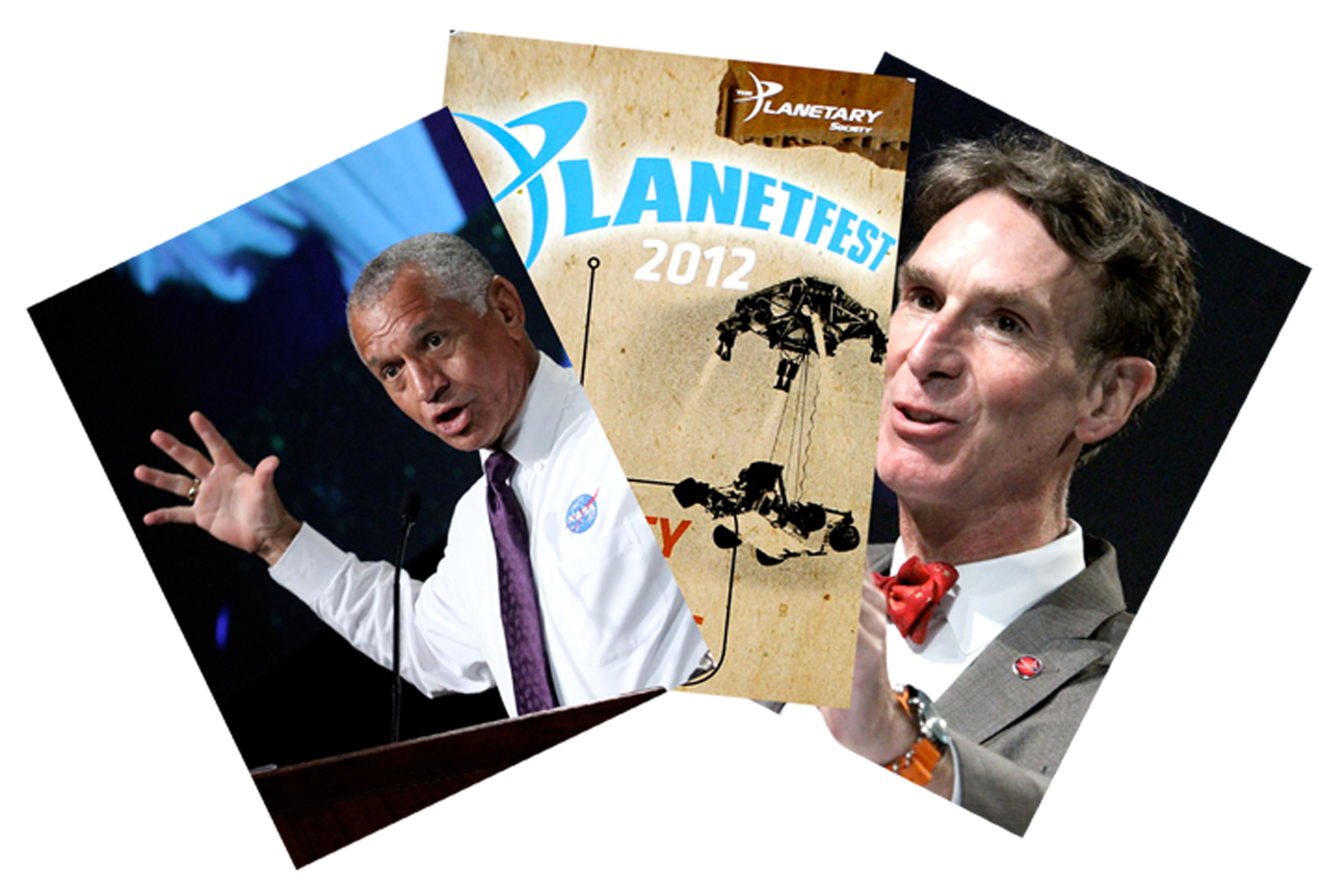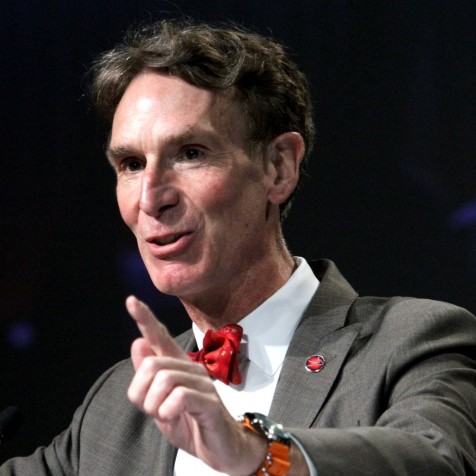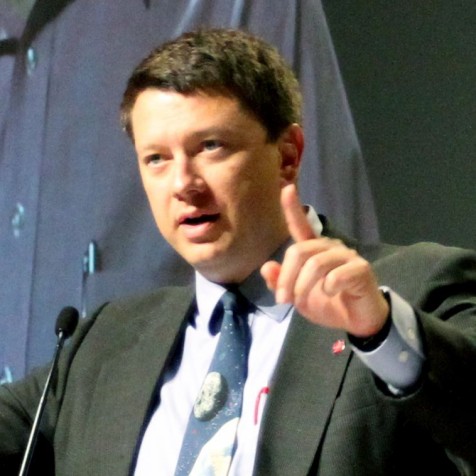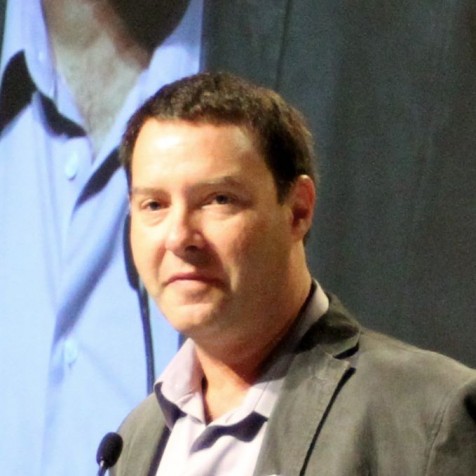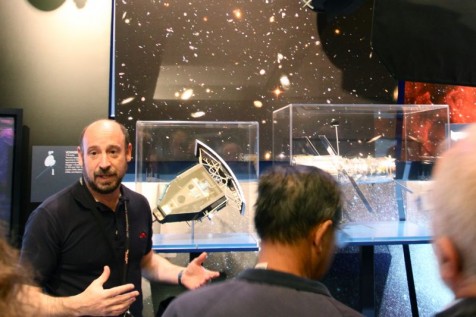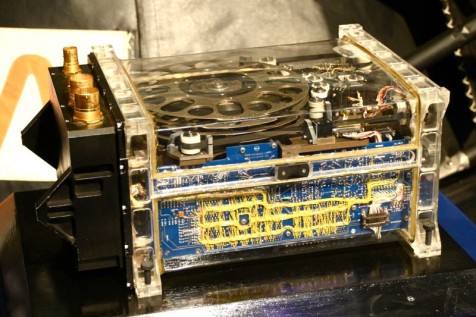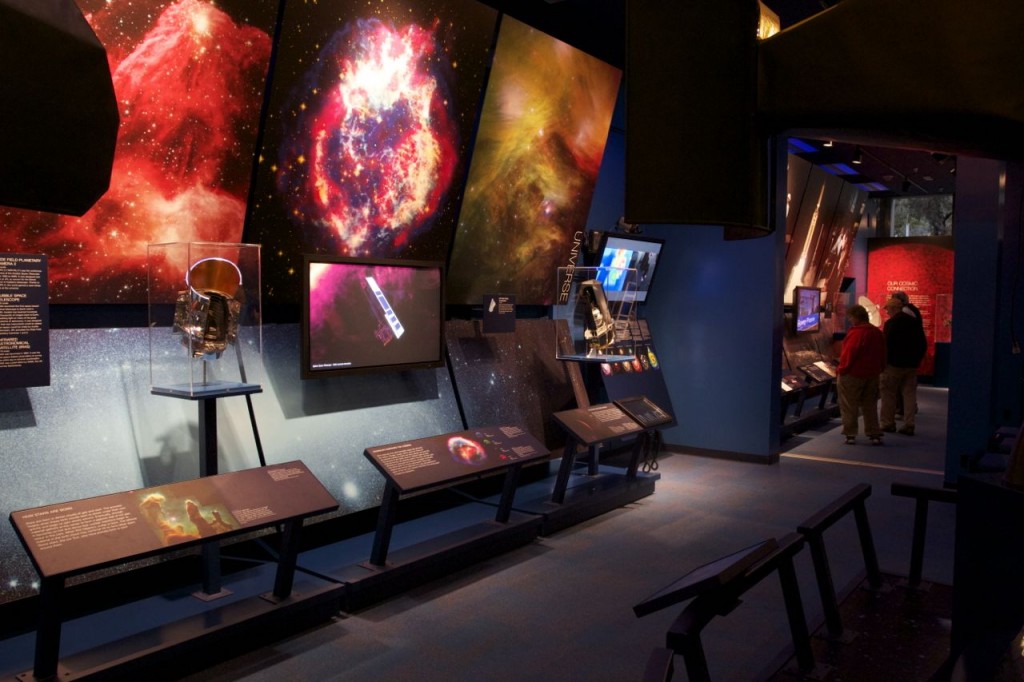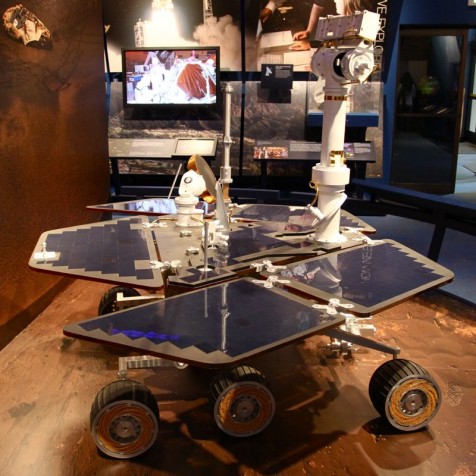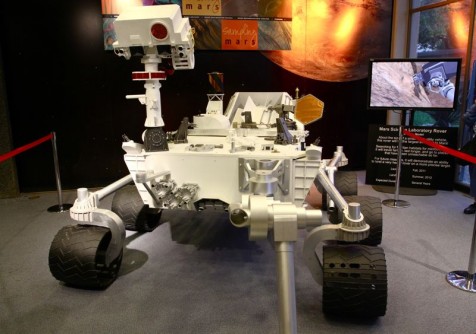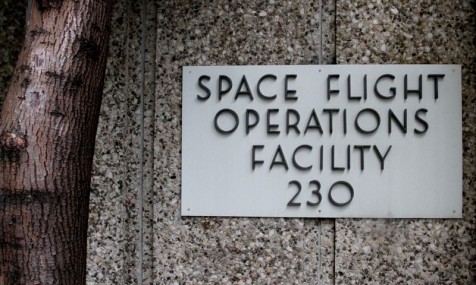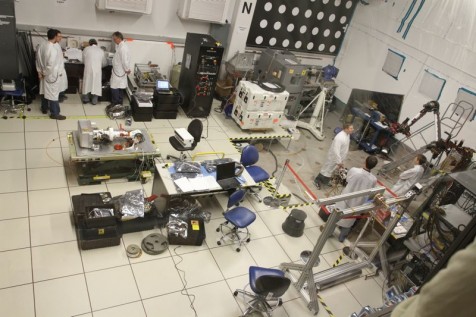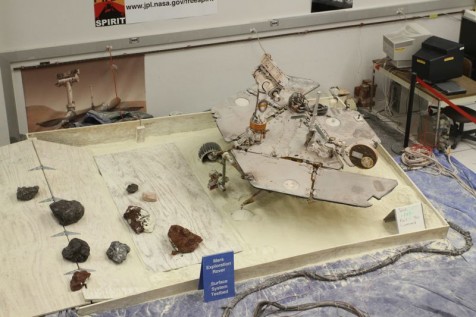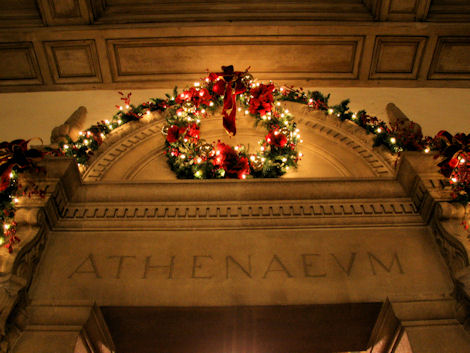
Unless you spent last week vacationing at the bottom of a Titan methane lake, you can’t have failed to notice NASA has just placed its largest, heaviest, and most advanced rover yet – the Mars Science Laboratory, or Curiosity, on the surface of Mars. And ‘placed’ it was – nice and gently – by a rocket powered crane.
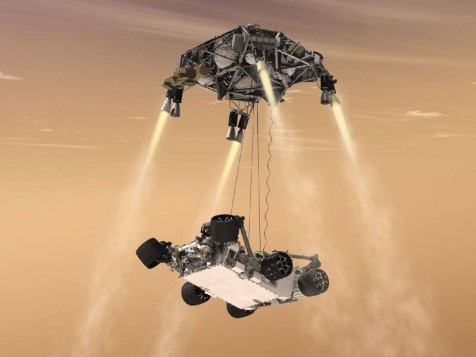
Even though I followed the moon landings, the idea of visiting Mars, in any form, still has a ring of science fiction about it. But last weekend at my first Planetary Society Planetfest in Pasadena, California, Mars for me and 1500 others became extra-real, as we stood enthralled and affirmed in the knowledge that, for all our faults, human beings can still pull this stuff off.
There were nail-biting moments and fascinating discussions. What I’ve put together here is a summary from my notes, mixed in with thoughts and photos to give you a taste of what went on.
Let’s set the scene with a JPL simulation of Curiosity’s landing:
And here’s the reaction where I was sitting in the Planetfest crowd:
Now meet four of the Planetary Society team who managed the panels, reported live from JPL, introduced speakers, and generally held things together from Saturday through to Curiosity’s landing late on Sunday evening:
Left to right from top: CEO Bill Nye; Director Projects Dr.Bruce Betts; President Jim Bell; Technology & Scientific Coordinator Emily Lakdawalla.

Arriving early Saturday morning for a front row seat, I knew I was off to a good start when NASA Director of Planetary Science Jim Green sat next to me and slipped me a couple of mission pins.
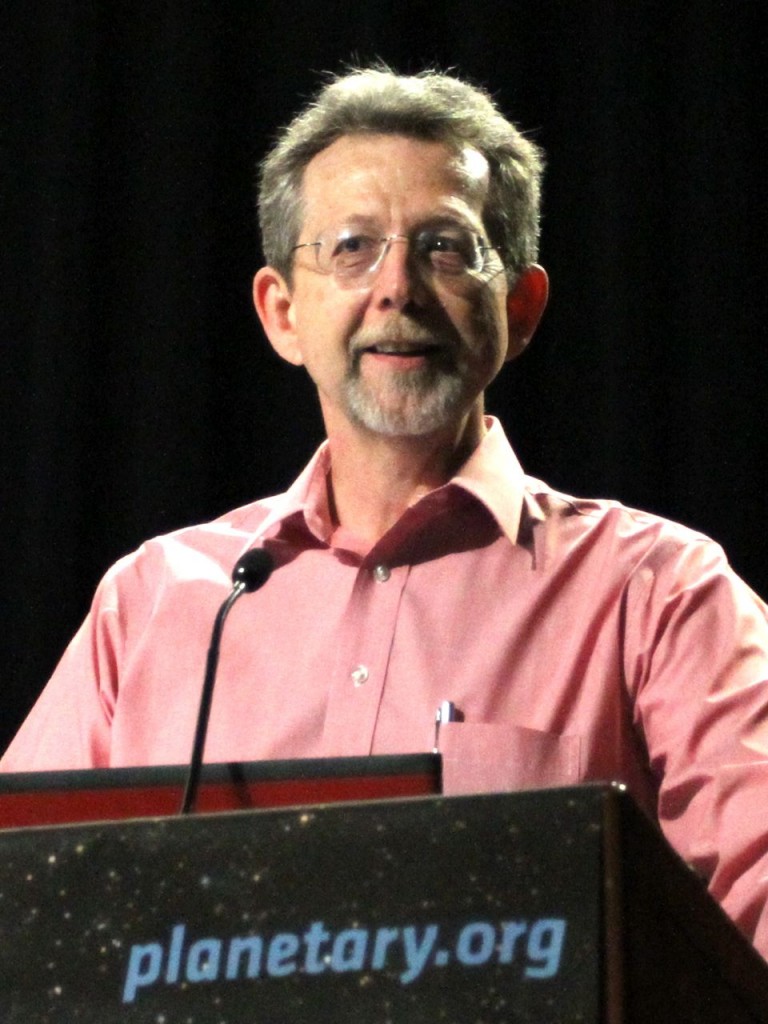
It also helped that by the time Curiosity touched down we were already Mars experts, thanks to two days of presentations from the likes of ‘Mars Czar’ Scott Hubbard. Hubbard, now an aeronautics professor at Stanford, authored NASA’s ten-year Mars program in which each mission informs and sets direction for future missions under a guiding science strategy of ‘Follow the Water’. That strategy has morphed to ‘Seek Signs of Life’, with the qualification that Curiosity isn’t looking for living life as such, but evidence of past life or conditions that might have supported it (incidentally, there’s an article on this aspect by Stuart Clark here in the Guardian newspaper).

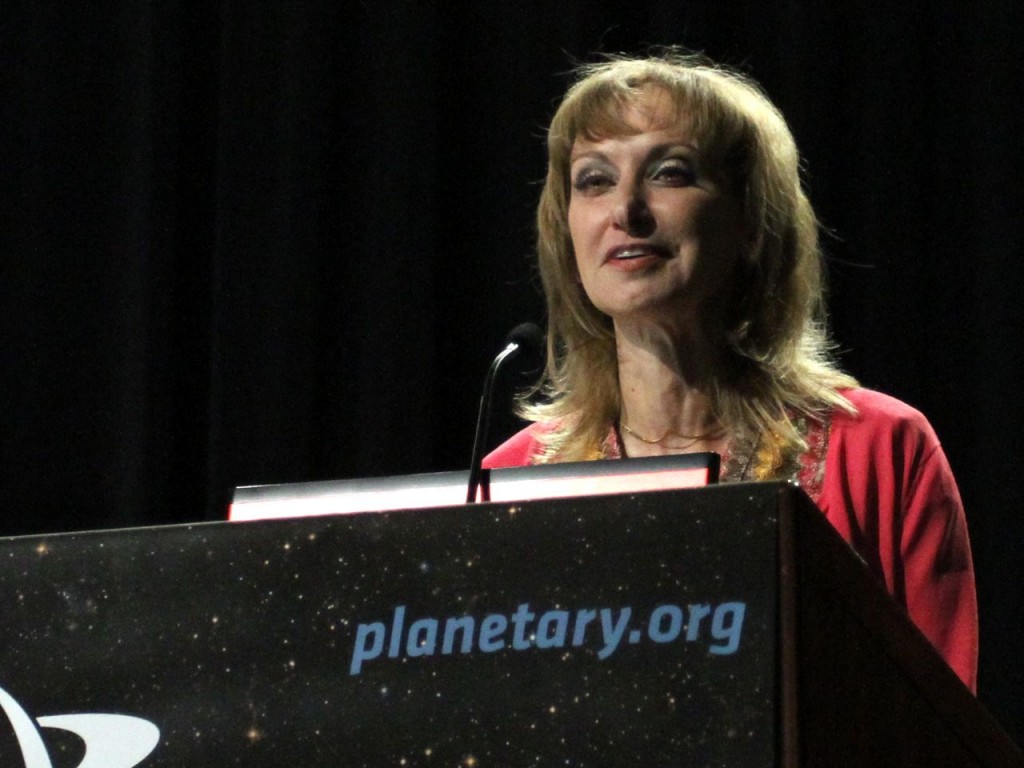
We can follow the sequence. Launched in 1996, Global Surveyor spotted evidence of flash floods, old polar oceans, and water-modified rocks. In 2001, the Odyssey probe detected possible water ice at the pole (using gamma ray spectroscopy), which in 2008 Phoenix confirmed, actually scraping some of it away. The 2004 Mars Rovers, Spirit and Opportunity, also found evidence of historic water in the form of tell-tale hematite ‘berries’. And in 2006, the high-definition imaging ability of the Mars Reconnaissance Orbitor (MRO) convincingly separated out surface features caused by water from those by wind. MRO images were also instrumental in identifying Gale Crater as Curiosity’s landing site. It’s sitting there now, in shake-down mode.
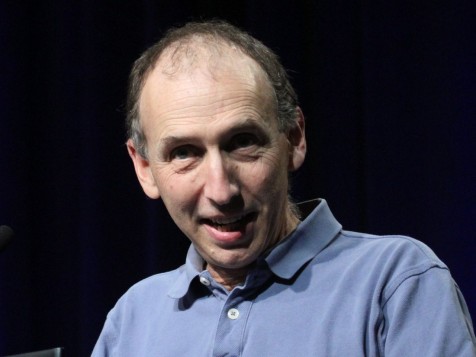
Choosing Gale Crater, said Senior Research Scientist Matt Golombek, as with any landing site, is all about balancing science and safety: a negotiation between scientists who want the rover to go places where it can do interesting science, and engineers who have to build something that will get it there.
Site choice is also iterative with spacecraft development during the build, consistent with a rigorous systems engineering approach that underpins Hubbard’s original strategy and integrates the science/engineering/management teams.
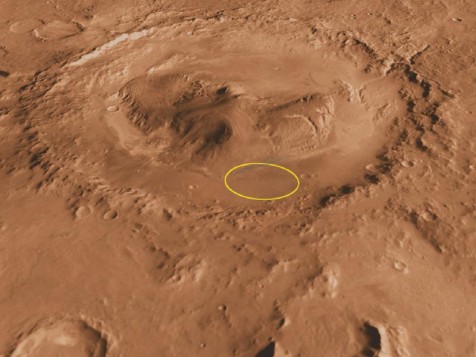
So why choose Gale Crater from what started out as fifty possible landing sites? Firstly, it doesn’t contain many mini-craters for Curiosity to accidentally land and get stuck in; but as importantly, great science waits there in accessible layers of sedimentary rocks stacked up around its central peak – Mount Sharp: layers where we might find signs of an environment for past life.

“The history of Mars is in this hole”
So said Head of Mars Program Doug McCuistion describing how, over the weeks and months, Curiosity will explore the 96 mile wide Gale Crater, moving in on the three-mile high central peak, analysing rocks as it goes – remotely by shooting them with a laser and looking at the emitted light, and by pulling samples into its onboard chem. lab.
Each layer of the ancient deposit at Mount Sharp represents a step back in time, and as the side of the deposit has eroded away, Curiosity doesn’t need long drills to reach them. We may, said Chief Engineer Rob Manning, find evidence of a historic “warm wet Mars”, or even the complex carbon calling cards of past life. Unlike the earlier Spirit and Opportunity rovers – essentially geophysics platforms – Curiosity, with its onboard chem. lab, is equipped to find them.
Curiosity’s driver, Scott Maxwell, used the analogy of backing your car out of the drive with a 15 minute throttle delay for an entertaining introduction to roadcraft on an alien world. The key tip it seems – based on experience with the Spirit rover – is don’t drive to anywhere you can’t see!
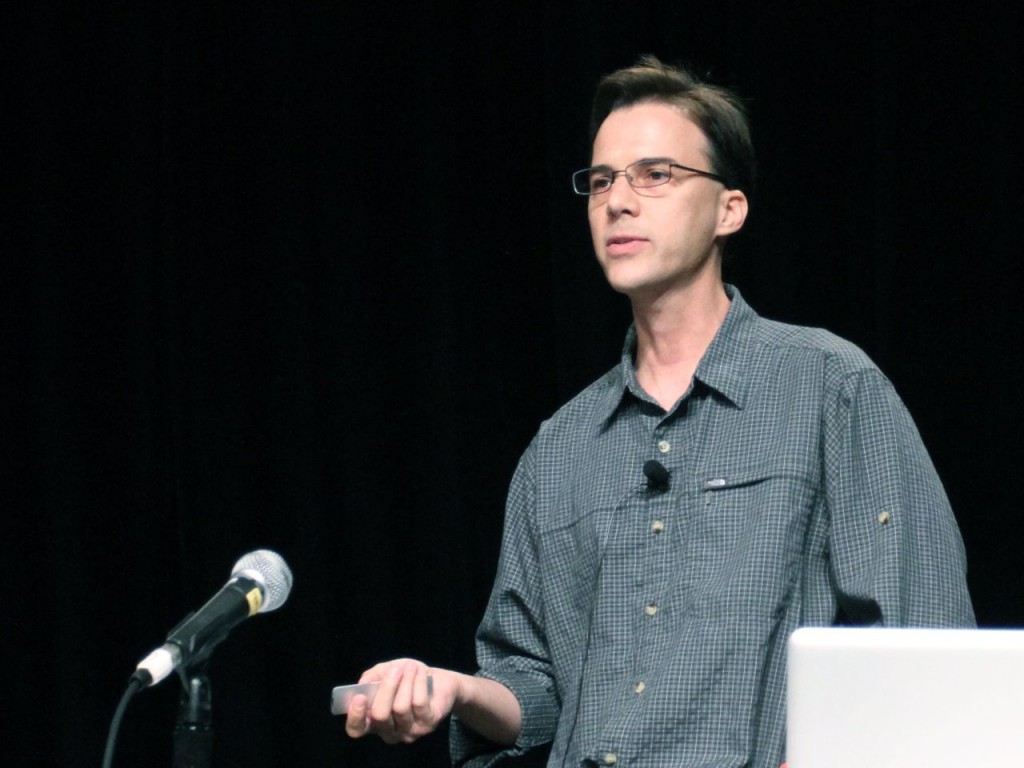
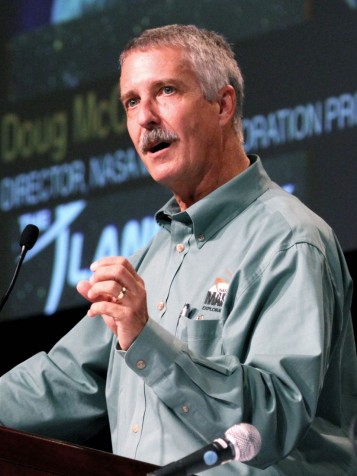
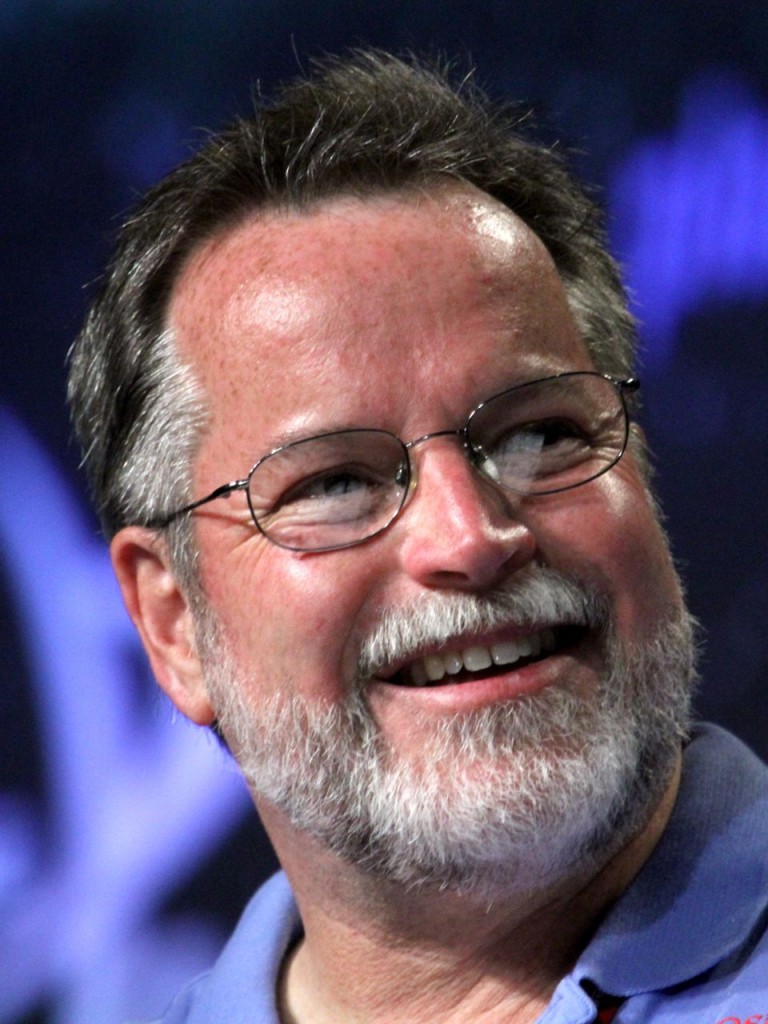
After Curiosity?
I guess next to the landing itself, the dominant buzz was around how best to counter a slowdown in the pace of planetary exploration and NASA budget cuts. Crazy as it felt against the euphoria of Planetfest, NASA has no follow-on missions to Mars scheduled after Curiosity (although India plan an orbiter for 2014). [Update 20/08/12, InSight Mars planned for 2016].
In the grand scheme of things, when it comes to actually paying for it, space and planetary exploration simply aren’t a priority for – as one delegate described the general populace – normal people. The Curiosity mission cost every American $7, or I guess about $1 /year. What’s seven bucks? One burger meal? A movie rental?
Science fiction author David Brin echoes the common frustration that we’re not doing enough, fast enough, in space. Where’s the desire? asks Brin, reminding us we have a strong track record of achieving challenging, unlikely, tasks if we really put our minds to it, and pointing to that fairyland in the desert we call Las Vegas.
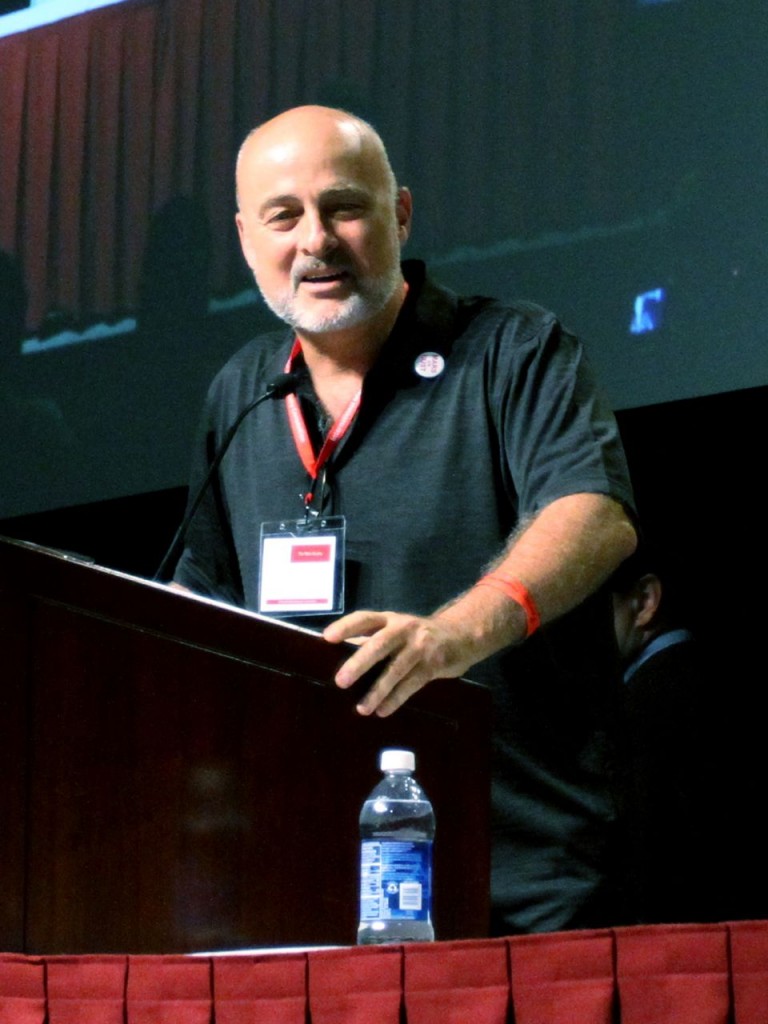
Asked what it might take for a NASA budget hike to receive more popular support, NASA Deputy Administrator Lori Garver suggested discovery of evidence for extra-terrestrial life or intelligent life might do it, or, less attractively, an asteroid threat to the planet.
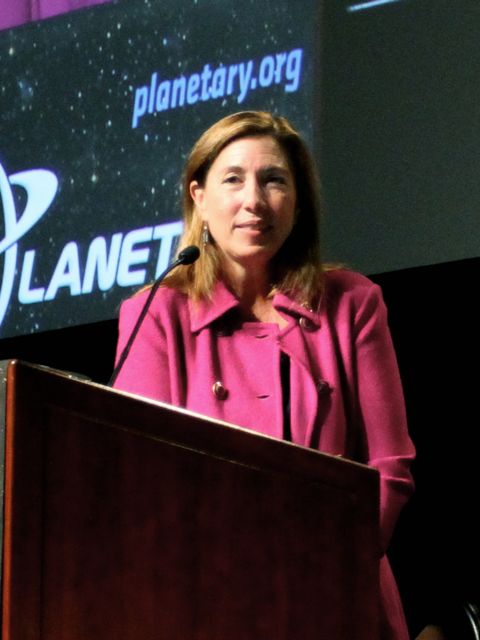
It’s not that there are no ideas for a further mission. That would likely involve bringing material back to Earth for detailed analysis by many different laboratories and researchers: a ‘sample return’ mission.
Meantime, the Planetary Society reiterates the case for continued investment to support (America’s) national interest. That includes Bill Nye’s argument for ‘trickle-up economics’, whereby exploration project investments in a region attract the best educators, lift regional and national education standards, motivate a new generation of technology workers – ultimately strengthening a country’s role as an innovation economy (the only sort that has much of a future in my view). That’s before the global economic and political stability benefits to other, if not all, countries stemming from international co-operation in space. These are the kind of messages NASA Adminstator Charles Bolden and JPL Director Charles Elachi endorsed the Planetfest audience to get across to their elected representatives (i.e. Congressmen).
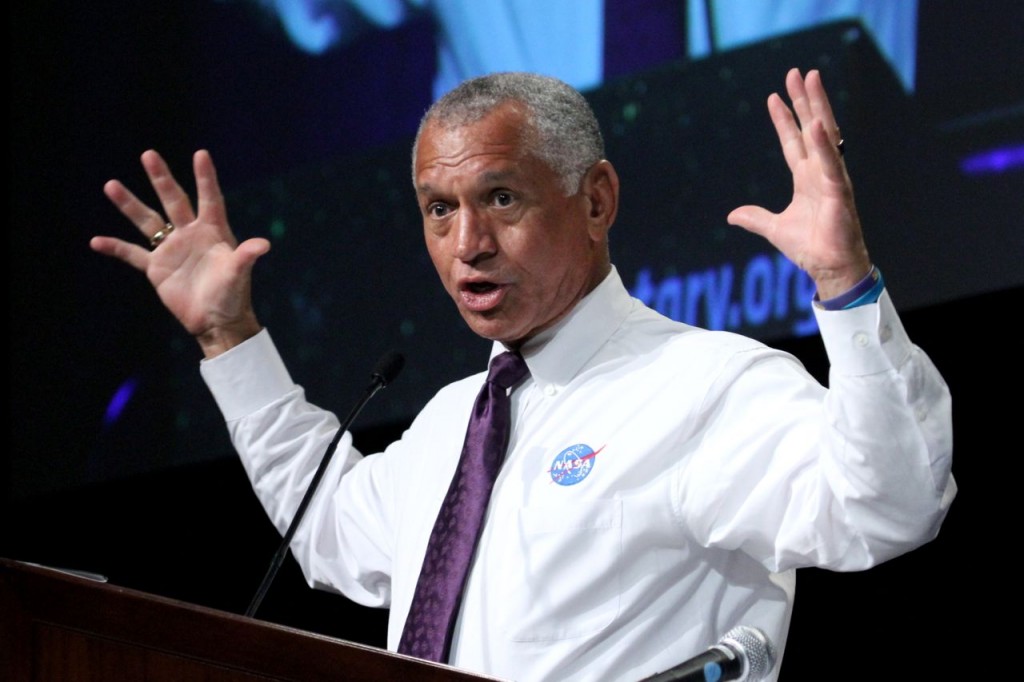

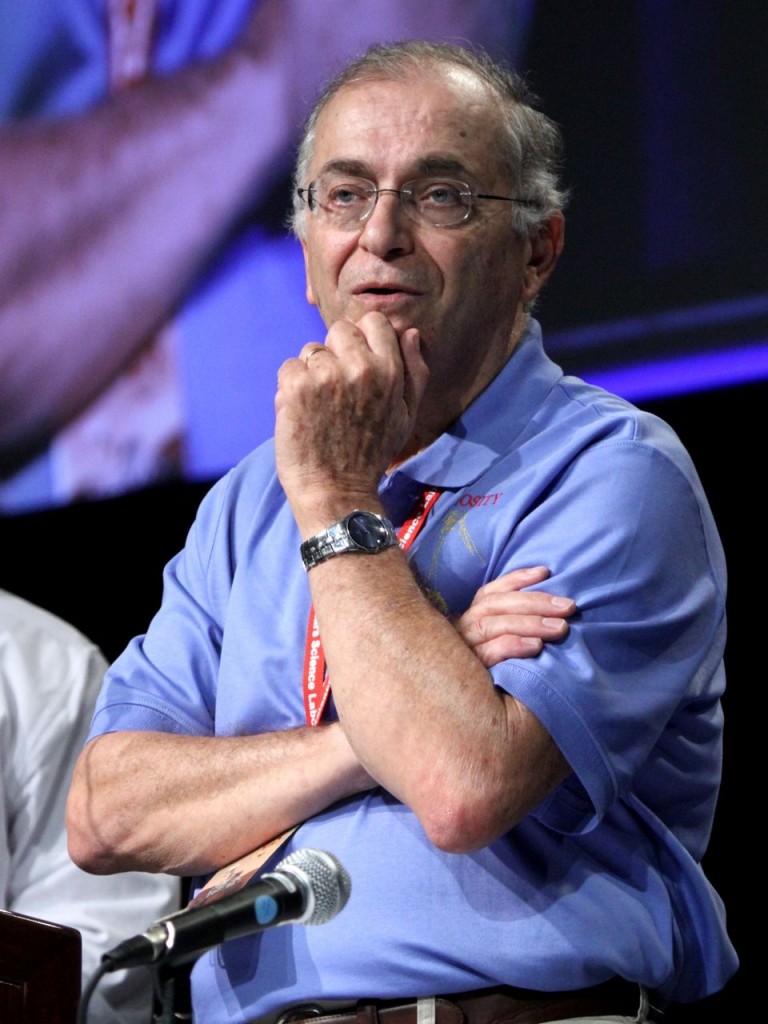
I suspect it also helps to have a few star quality communicators, not to say terminal space enthusiasts, on the case – like Bill Nye, Emily Lakdawalla, and Astronomy Outreach Specialist and Planetfest cheerleader Shelley Bonus :
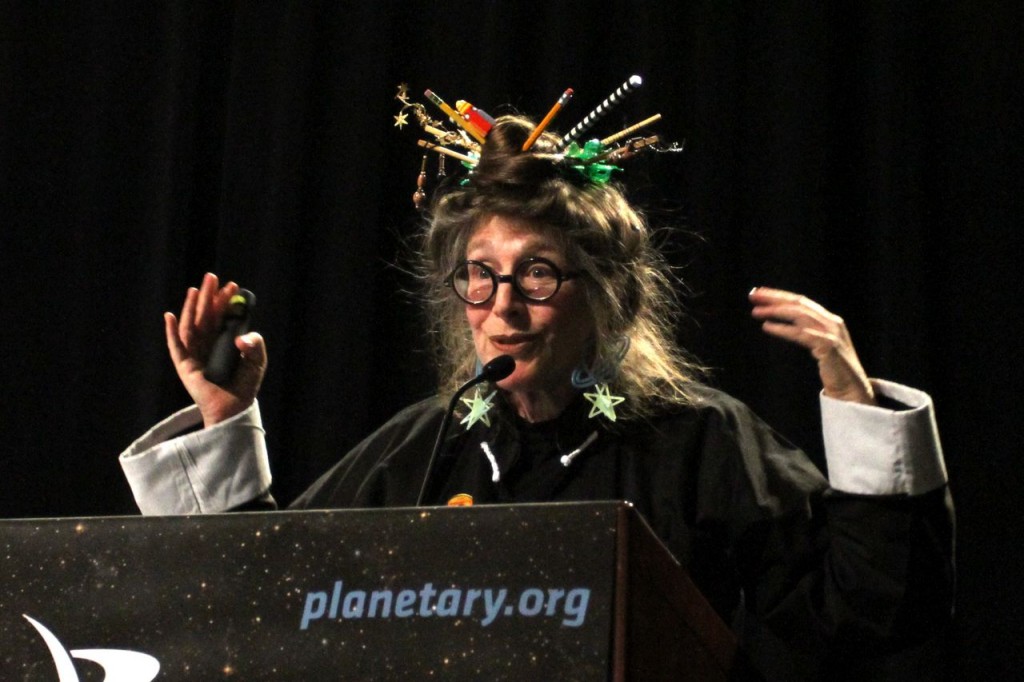
Commercial Space
Will the future of space be saved by the market? NASA has made extensive use of commercial contractors since before the Apollo program, and now an upswell of new businesses like SpaceX, XCOR, and Virgin Galactic, bringing with them new business models and work cultures, present fresh possibilities.
The role and opportunities for private investment were explored by a panel comprising Andrew Nelson from XCOR, developer of the Lynx low earth orbit rocket plane; George Whitesides, CEO of Virgin Galactic, and your best bet for an early space holiday; Peter Diamandis, founder of the X-Prize, an initiative which, among other things, is in the process of spawning a host of mini-moon-landers; and David Giger of SpaceX, the group whose Dragon capsule in May 2012 hooked up with the international space station. Lynx and Dragon were both on display.
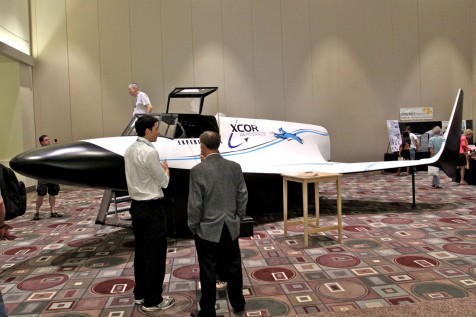
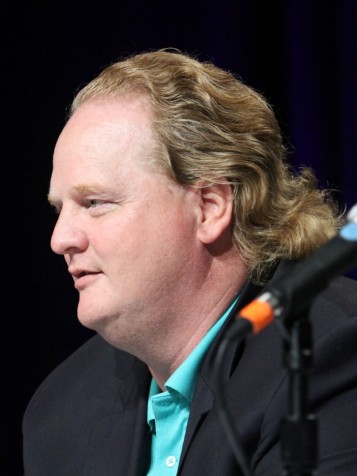
As a trend, relatively well understood processes like taxiing to Earth orbit look likely to migrate almost 100% to commercial interests, leaving NASA and the publicly funded space efforts of other nations to push the exploratory envelope. But it’s not clear-cut. Peter Diamandis reckoned the first manned mission to Mars could be a private venture – and made a bet with Whitesides to that effect (freebie to orbit on Virgin Galactic if he wins).

Private entities can take bigger risks where they’re justified by attractive financial returns. Diamandis believes asteroids will be commercially mined in the next 10-15 years. Some contain precious metals, others carbonaceous chondrites – loaded with hydrogen and oxygen (as water) that, converted to fuel could be stored in space depots; beats lifting every ounce to orbit as we do now. These ideas could revolutionise the fuel logistics of solar system exploration. Science might be coincident with commercial ventures – but it’s still science.
All that said, with private investments apparently self-limited to the hundreds of millions of dollars, not billions, the panel believed public investment is still important.
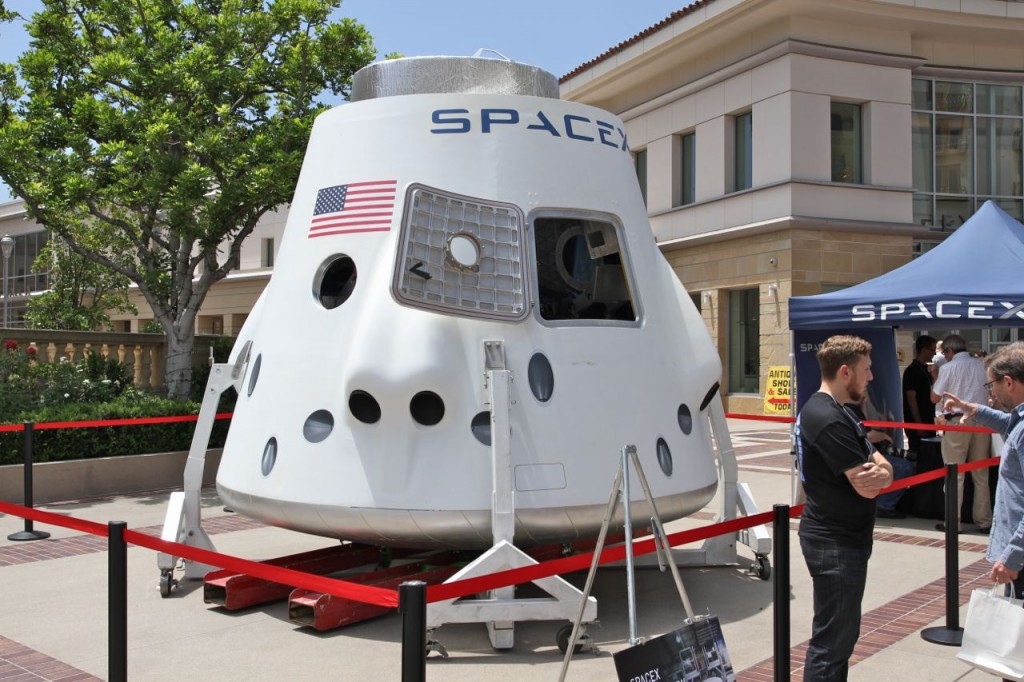
One company already working with NASA is Sierra Nevada, who were involved building the sky-crane which, when this picture of Executive VP Mark Sirangelo was taken, had yet to lower Curiosity safely on to Mars; so maybe that’s a nervous smile.
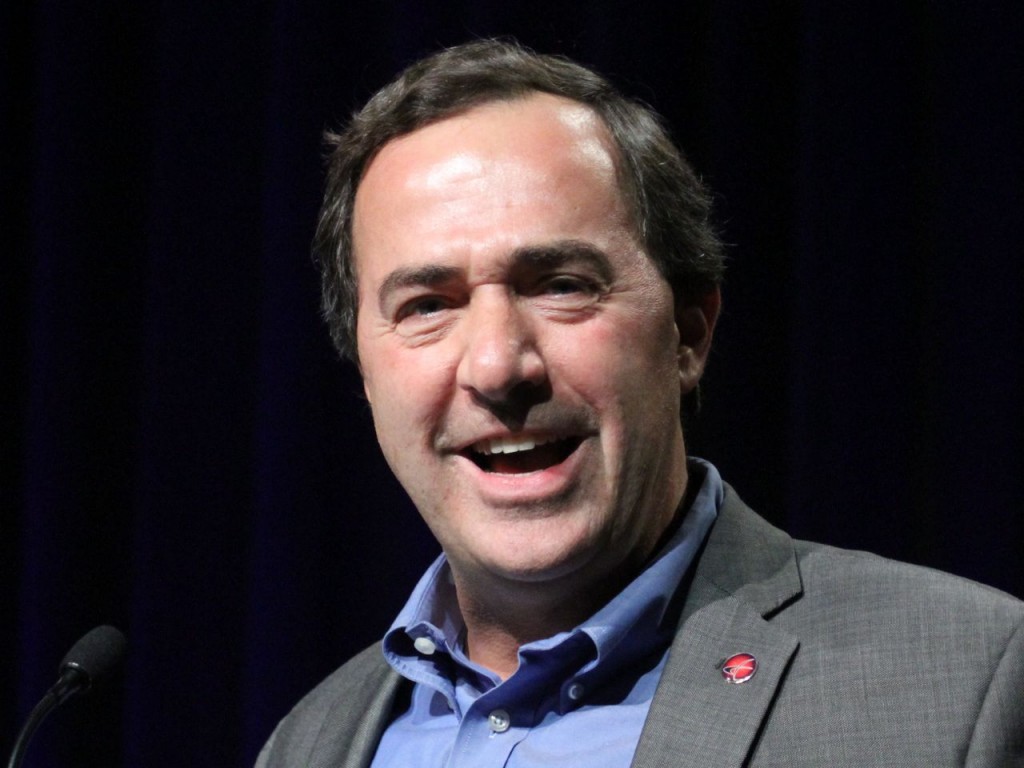
But as one of three suppliers chosen to develop launch systems to reach the space station, along with Boeing and SpaceX, Sirangelo can be happy. On a more sombre but celebratory note, Sirangelo presented a tribute to the life of astronaut Sally Ride, who died in July this year.
Manned Missions?
Mentally photoshopping human figures into Martian panoramas is irresistible. And while the debate around the merits of manned versus unmanned exploration trundles on, some folks, like aerospace Engineer, Founder and President of the Mars Society, and author of The Case for Mars, Robert Zubrin, just want to get on with it.
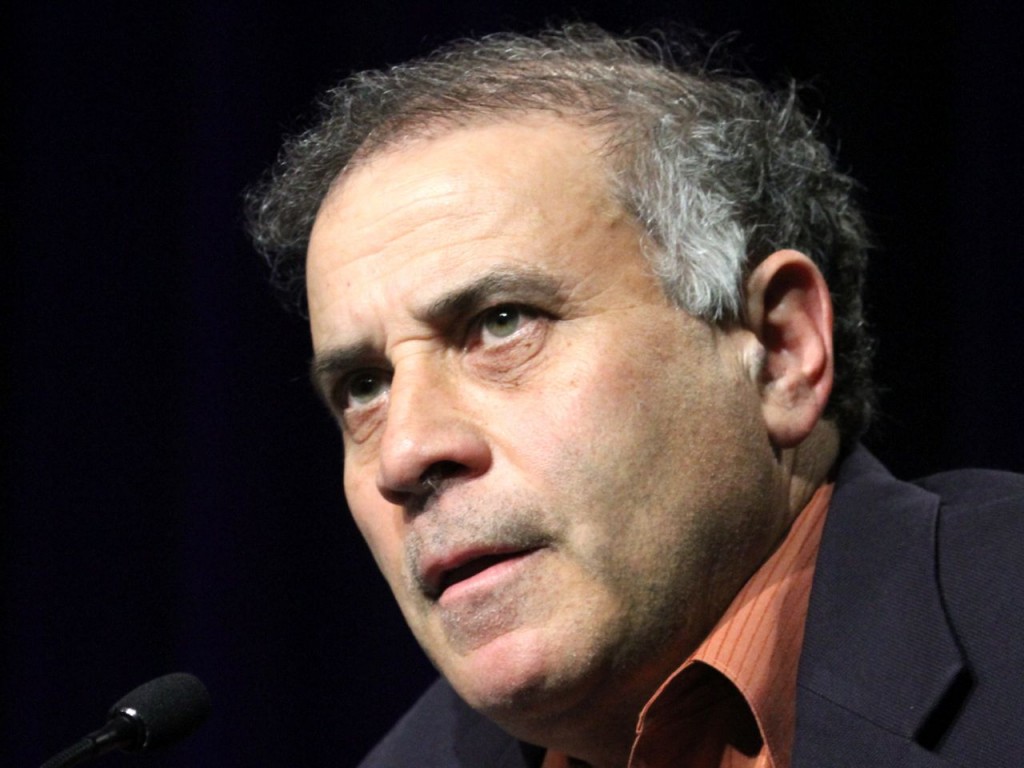
Zubrin, whose enthusiasm alone should get him to Earth orbit, favours the systematic transfer of first unmanned, then manned, modules – for fuel generation, living, etc. – to Mars over a period of years. At least his approach side steps the popular but contentious (and somewhat macho?) debate around who’s ready to hop on a one-way mission. When X-Prize founder Peter Diamantis asked who would volunteer at 75% and 50% risk levels, the show of hands by my reckoning was reserved and super-reserved (although as George Whiteside commented, enough for a crew!) Diamantis reckoned he’d sign up at the 50% risk level. I got the impression from NASA Adminstrator Charles Bolden that he personally supports manned exploration. Further pressure for manned missions comes from advocacy groups such as Artemis Westenberg’s Explore Mars, whose optimistic goal is to see humans on Mars by 2030.
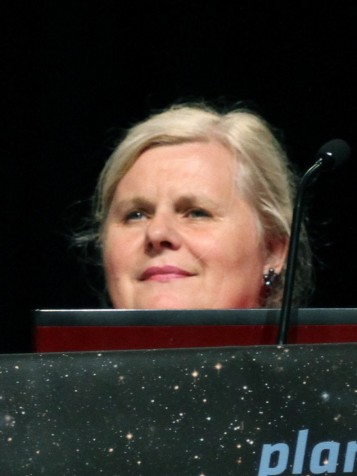
Of course, you can go to Mars in your imagination when you like, a mission delegates at Planetfest prepped for with the help of the Space Art panel. Led by President of the International Association of Astronomical Artists, Jon Ramer, the five space artists discussed the ins and outs of their craft applied to scientific visualisation, fine art, book, and movie work.
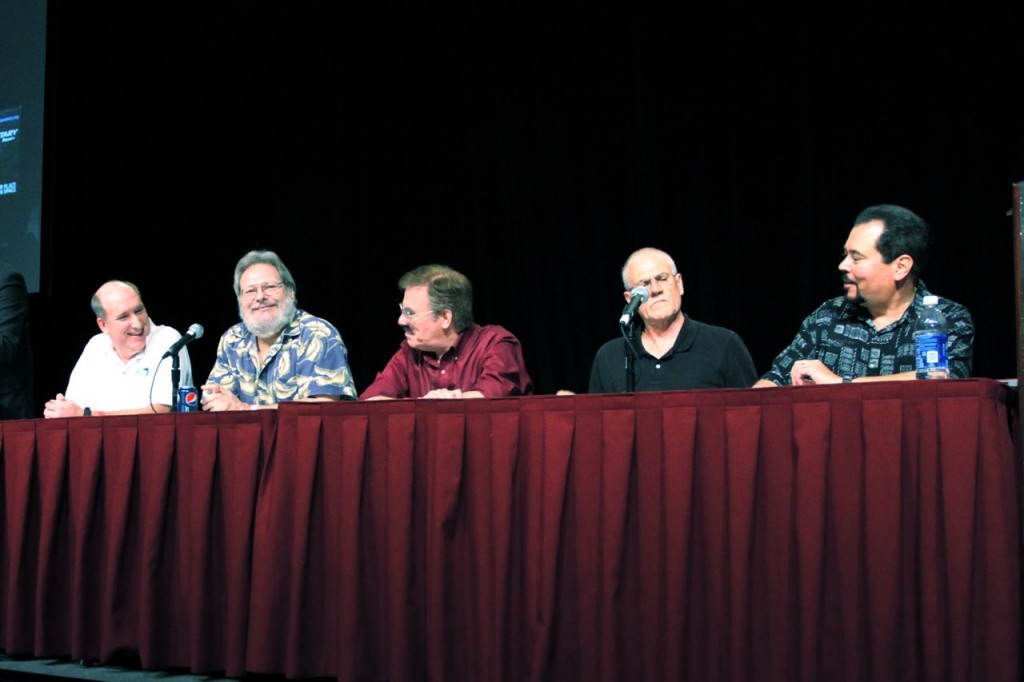
Staying with the arts. In tribute to science fiction icon Ray Bradbury, who died in June this year, co-founder of the Planetary Society Louis Friedman, with actor Robert Picardo and space historian Andrew Chaikin, led a poetic tribute to the visionary and sometimes controversial author of The Martian Chronicles.
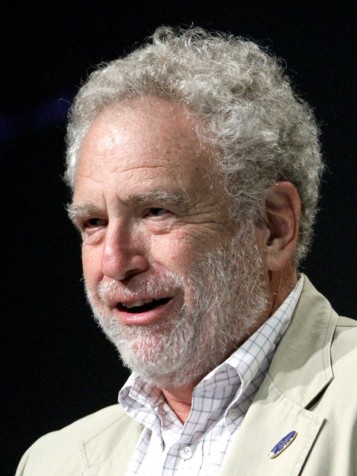
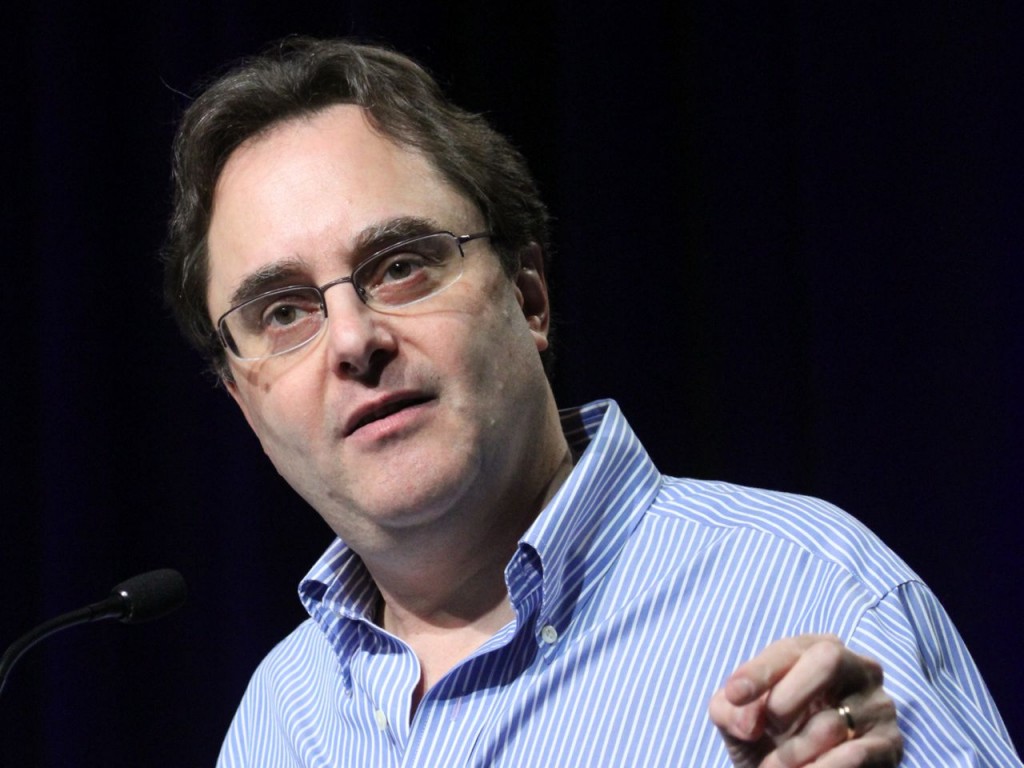
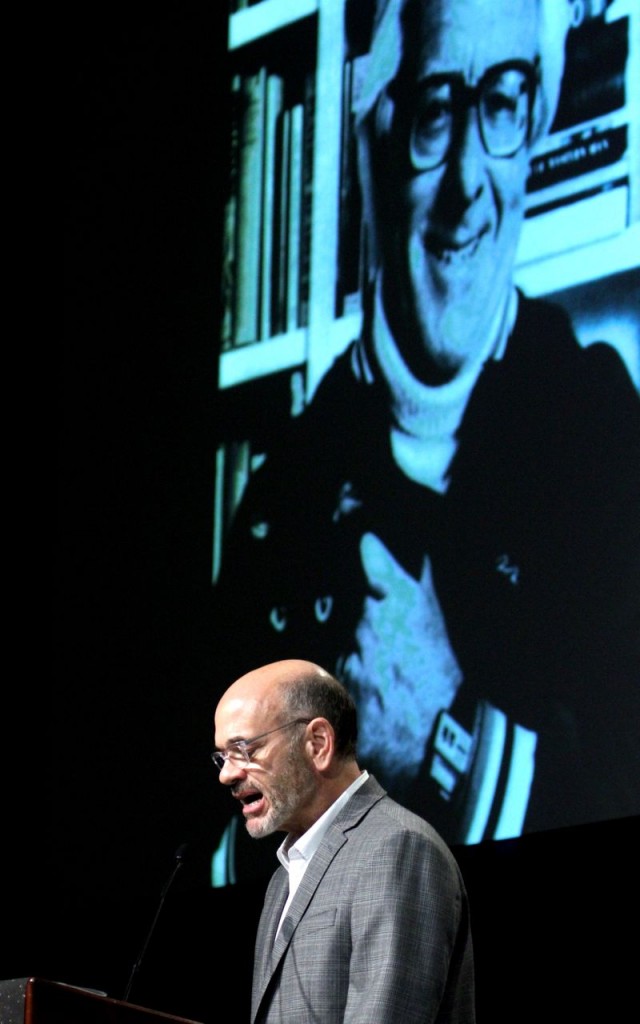
Diversions and Surprises
Bill Nye may be the CEO of the Planetary Society, but for half an hour on Saturday he donned his trademark lab coat to become 100% ‘Science Guy’ in a liquid nitrogen-fueled double act with actor/director Robert Picardo. The session ended with Bill feeding marshmallows at -370 F to Picardo and young members of the follow-on ‘careers in space’ panel.

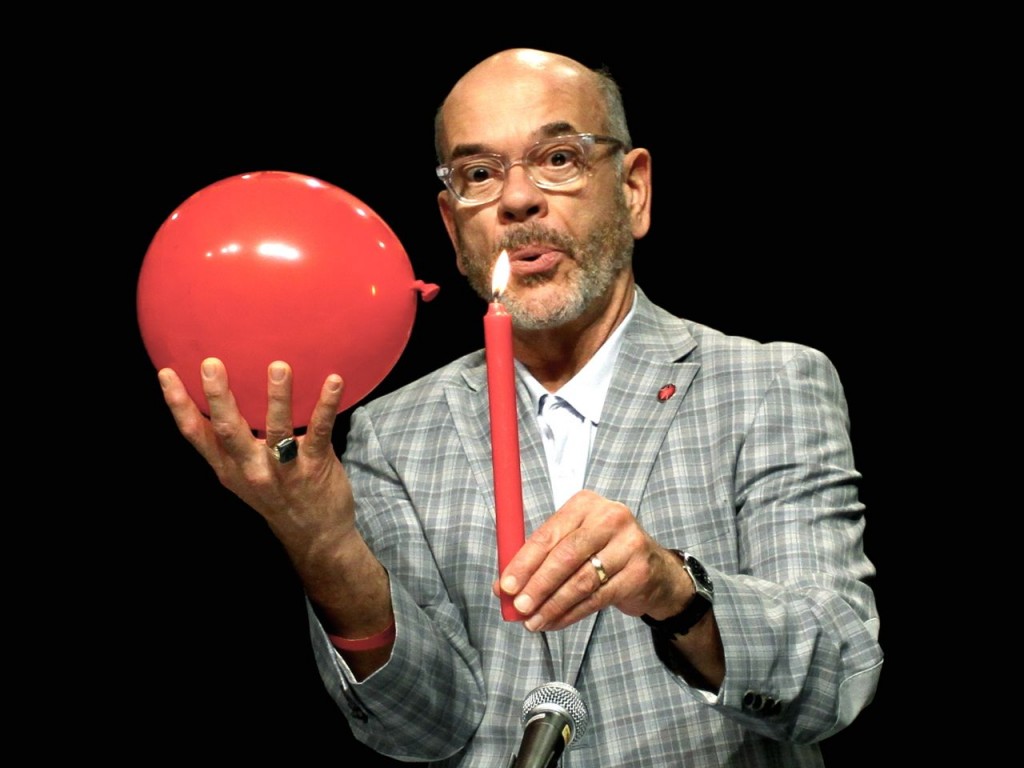

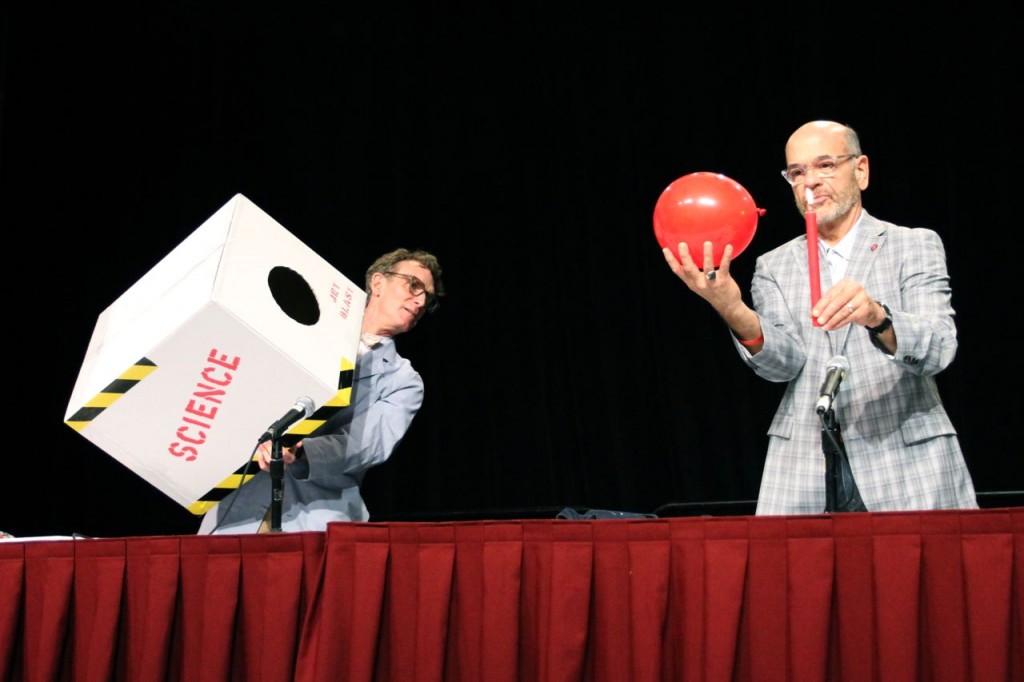
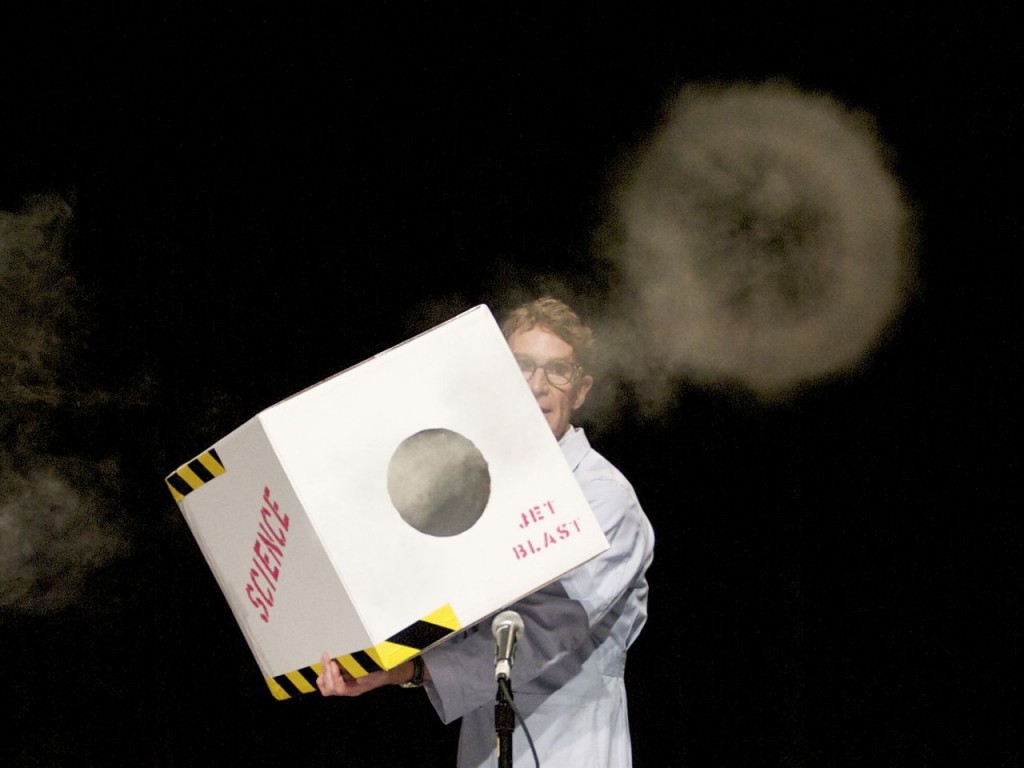
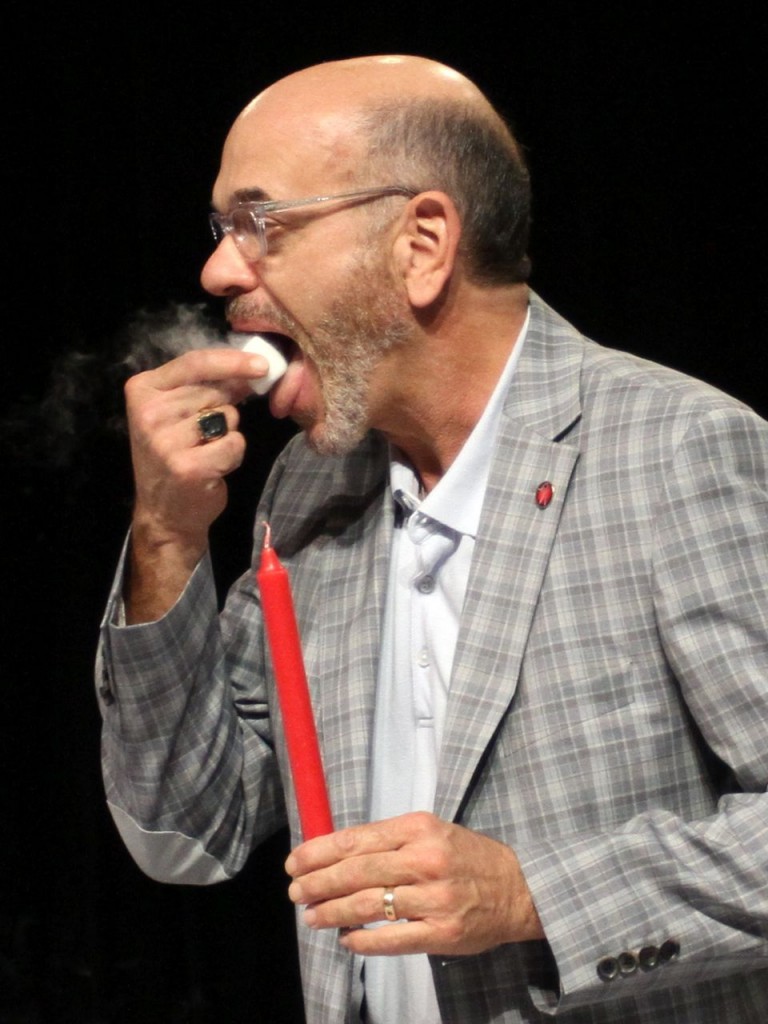
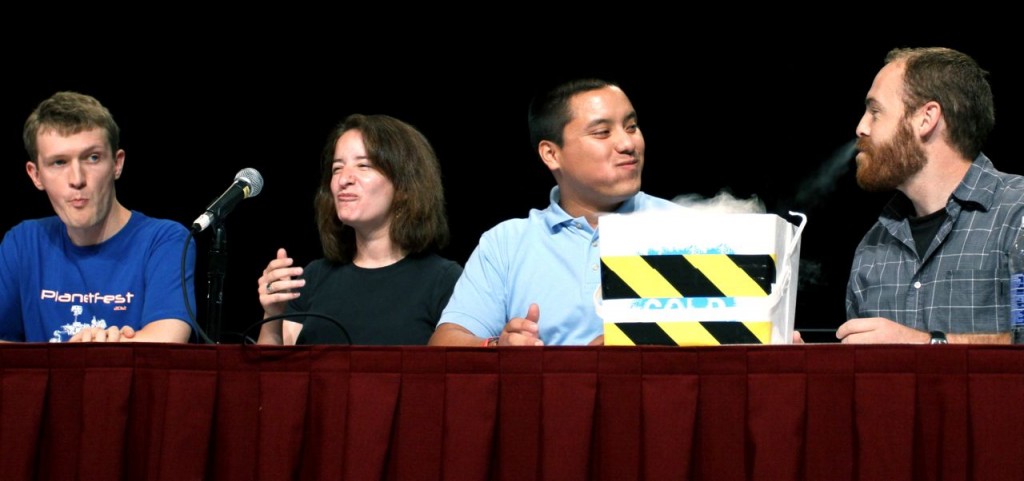
Special Guests
A host of special guests appeared on Sunday afternoon, perhaps the most diverting being writer / producer Ann Druyan, who was married to and worked with the late Carl Sagan.
Joined on stage by Family Guy producer Seth MacFarlane, Druyan shared progress on a new thirteen part re-make of Sagan’s famous Cosmos series that will be aired on Fox Network and fronted by Neil Degrasse Tyson.


It’s encouraging that Druyan is staying close to the production, and through MacFarlane aims to maintain the production values and ethos of the original show. Asked whether climate change would be addressed in the updated version, Druyan said it would be – as it was in the original. Also, there would be less emphasis on the nuclear threat. Again in common with the original, efforts will be made to bridge any perceived science-religion divide, perhaps through an appeal to common goals around themes like preservation of the environment. As one delegate put it, Carl Sagan could ‘disagree without being disagreeable’. It will be interesting to see what Tyson does with the Cosmos mantle.
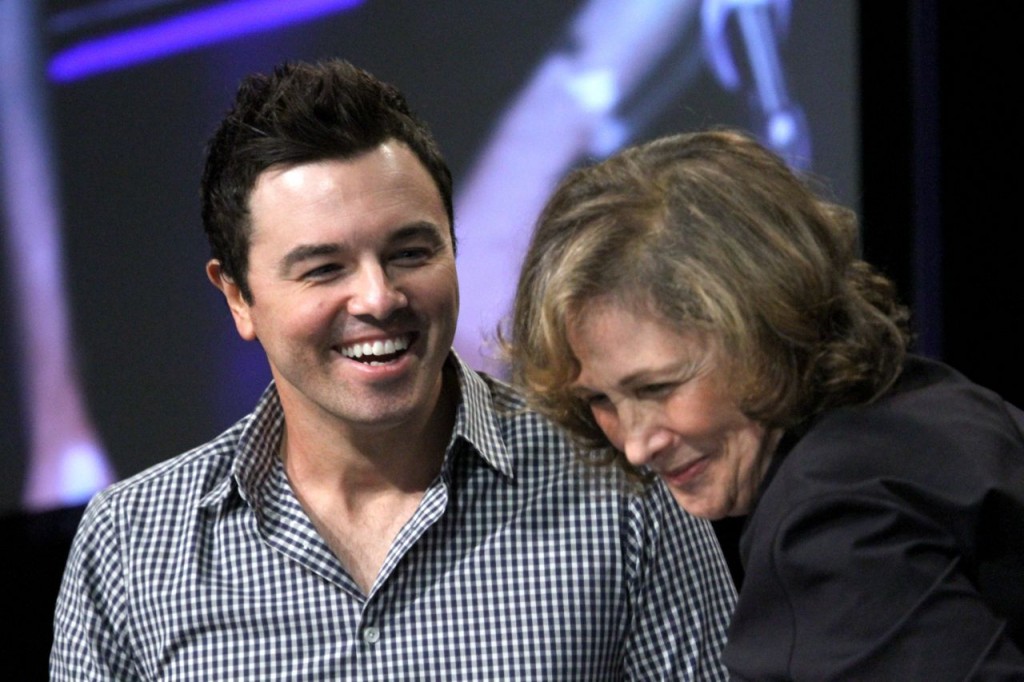
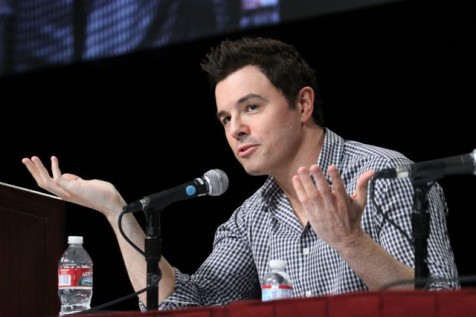
Until Next Year
That’s all folks. All in all a pretty unforgettable weekend. Anyone feeling a bit cynical about space exploration or those who support it would do well to sample one of these gigs. Bill Nye is dead right when he says adventures like Curiosity represent mankind at its best!
Unless otherwise indicated, all photographs by Tim Jones
Of related interest on Zoonomian
Buck Rogers – A Copper-clad Lesson from History
NASA Jet Propulsion Laboratory
